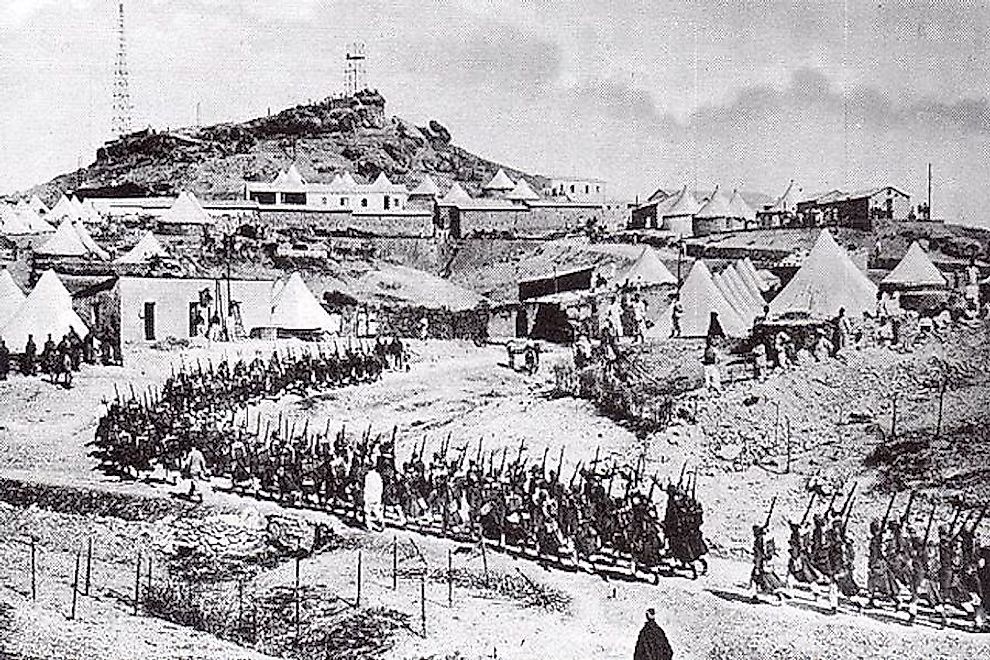What Was the Agadir Crisis?

Agadir was a port in southwestern Morocco. The Agadir crisis (also called second Moroccan crisis) was an international crisis caused by the deployment of French troops in Morocco against German expectations. The events and actions that followed from different actors in France, Germany, and Britain shaped change in future strategies. Of importance is the role of the media in escalating the crisis and diplomatic processes that quelled hostilities.
Historical Background
The Anglo-German tensions were high between 1905 and 1906 partly due to a military contest between Germany and Great Britain which left France with more influence in Morocco. Morocco often caused a diplomatic crisis between France and Germany, who were each keen to increase the extent of their economic control. During this period, Germany was interested in mining in southern Morocco. In 1909, France and Germany agreed to respect each other’s interests. It soon became clear that France would not allow Germany to build railway lines in Morocco. Efforts by German Foreign Minister, Alfred Von Kiderlin-Wachter and French’s Jean Cruppi to resolve the stalemate collapsed, encouraging some in Morroco to rebel against the pro-French Sultan Mulan AbdelHafid and attack French forces in early 1911.
To assert its authority, France deployed 20,000 troops in April 1911 to support foreigners living in Fez. It was too much for Germany. However, Wachter warned against taking on the French for he believed it was only a matter of time before France took over all of Morocco. Careful not to anger the military, he made the French believe that he was not going to let France keep the troops in Morocco. Hoping his move would please the Military generals and at the same time provoke minimal French reaction, he planned to send gunboats to defend Germans in Morocco. Watcher and Jules Cambon, the French ambassador to Germany who also feared for full confrontations, commenced negotiations. Despite this, ‘SMS Panther’, a gunboat was sent to Agadir on 1st July 1911 and later replaced by a bigger ‘SMS Berlin’. France and Britain knew that Germany was only making a statement, and neither was prepared to retaliate aggressively, but some actors in Britain believed that Germany wanted to turn Agadir into a naval base forcing the Royal Navy to be on standby.
Media And Diplomacy
On 9th July 1911, Watcher and Cambon stated their countries’ interests in Africa. In exchange for French control in Morocco, Germany expressed interest in French Congo. On 20th July 1911, "The Times" published an alarmist article about Germany’s interest in the Congo stating that such a move would threaten Britain’s interests in sub-Saharan Africa. Britain was not pleased with this, despite earlier indications that it would not confront Germany over Morocco. The talks continued through to September despite British media running series of propaganda articles claiming that the royal navy was on high alert because of Germany’s actions. Britain latter announced that it was not sending warships to Morocco but was monitoring the situation.
Resolution Of The Crisis
The Franco-German negotiations briefly collapsed on 1st September 1911 after Cambon fell ill leading to the collapse of Berlin Stock market. They resumed and concluded by November with France taking Morocco and conceding some parts of Congo to Germany. Diplomacy ended the Agadir crisis, but it is the media that stirred it up and influenced political response. Watcher and Cambon, with no official recognition for their roles, sent each other signed photographs. Cambon referred to Watcher as “my dear friend and terrible enemy.” Watcher wrote, “my terrible friend and dear enemy.”







